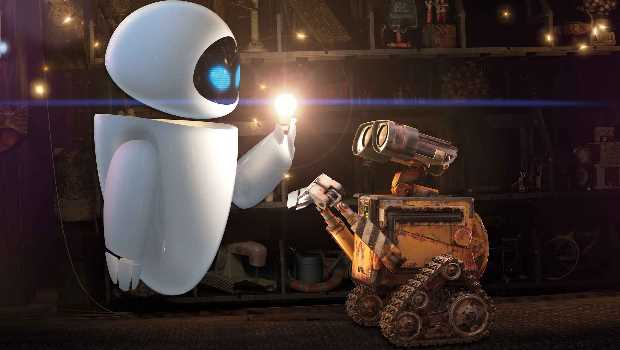WALL-E Review
You could be forgiven for feeling somewhat short-changed by blockbuster filmmakers at this point in 2008; it’s been a lukewarm season so far, to say the least. But fear not because, as the guy who does the voice-overs in movie trailers would put it, everything you know is about to change. In a feat of artistic accomplishment that deserves every award going, Finding Nemo director Andrew Stanton has managed to improve on Pixar’s already impeccable standards (Toy Story, The Incredibles, Ratatouille) resulting in what could end up being the best movie of the year.
The set-up is simple; WALL-E is a little robot who is completely alone on earth, 700 years in the future, cleaning up the mountains of waste that humans have left behind. Humans are not extinct, but to reveal what has happened to them would give away one of the film’s great surprises. All I’ll say is that it’s not pretty, but it is wickedly funny.
The problem for WALL-E is that he’s lonely; having been at his job for so long, he has developed something of a fascination for earth’s myriad discarded treasures, including a devotion to an old videotape of Hello Dolly! that he watches ad infinitum. The little chap yearns for a connection like the one he sees onscreen when Michael Crawford and Marriane McAndrew hold hands, and when ultra-sophisticated search-bot Eve lands on earth, WALL-E sees a potential friend. From here, the sky is not even the limit for where Stanton and his team of brilliant animators take the story.
So yes, it’s a film about robots, electronic utilitarian things, but if you remain unmoved by their adventure by the time the credits roll, I am willing to bet that you have no soul. Even though there isn’t a single living thing captured in any of its shots, WALL-E surges with human warmth, humour, life and love, and in its visual splendour and audio ingenuity it is transcendent in the way of the greatest works of art. The opening scenes on earth are stunning in their vast beauty, and when the action moves into space the visuals become simply breathtaking. Similarly, the film’s sound is amazing; veteran sound designer Ben Burtt has given the two main robots ‘voices’ bursting with character, and the film’s music is wonderful, ranging from low-key synths to full-blown orchestra, always helping to tell the story and often affectionately referencing classic movie scores.
And this is WALL-E’s other winning hallmark; just as the main character is in love with images on a movie screen, the film itself is one big love letter to the movies and their transformative power. From overt references to 2001 and Manhattan, to WALL-E’s unmistakable resemblance of ET, to the dialogue-free first 30 minutes in the spirit of the pre-talkie era, the film is steeped in classic cinema history. This is no pastiche, the references clearly come from the filmmakers’ hearts, and reassert the fact that Pixar are not in the business of making quick flicks to keep your kids entertained for 90 minutes (don’t worry though, your kids will love WALL-E).
WALL-E belongs up there with the greats that it pays homage to, primarily because every element (the visuals, the sound, the jokes, the movie references) contributes to the telling of the story, and nothing is allowed to get in the way of that. It’s a story that will be told countless times on screens all over the world for years to come, but that doesn’t make it any less brilliant or important. Simply put, WALL-E is a masterpiece.
Related:
Interview with Director Andrew Stanton on WALL-E
Last modified on








